Could Philly’s deadliest road finally get a subway line?

After decades of pollution, Eastwick landfill gets cleaned up
Little library brings sidelined voices to a sidewalk near you









Could Philly’s deadliest road finally get a subway line?

After decades of pollution, Eastwick landfill gets cleaned up
Little library brings sidelined voices to a sidewalk near you








Traces of panic on the streets of Philadelphia.
On my bike ride home from work I count no fewer than three people carrying cases of bottled water. Near Drexel’s campus I overhear a student who appears to be an undergrad saying she’s called four food delivery services before finally finding someone who could bring some precious H2O to her doorstep.
executive director David Masur and Natural Resources Defense Council senior director Kimberly Ong points out, a liquified natural gas terminal is slated to be built in Gibbstown, New Jersey, less than 15 miles downriver from Philadelphia. If the project is completed — and there is no reason to believe it won’t be — Philadelphia and its suburbs will have extremely dangerous, highly-explosive gas slithering on train


Nine out ten SEPTA buses on the road right now are hybrid-electric buses. Hybrid-electric buses reduce emissions by up to 40 percent.


After her job at an investment bank in New York City came to an end, Rebecca Catacalos planned on becoming an interior designer. But, inspired by her daughter Brittany’s culinary talents, Catacalos decided to rethink her post-banking days.
“I thought it might be fun just to have a small family business,” Catacalos explains. “So I started making granola.”
Catacalos began making and selling her granola at farmers markets around New York City, but soon left the big city for the wide open spaces of the Lehigh Valley, specifically Allentown, home to her daughter Brittany and Brittany’s family.
After her relocation, Catacalos’s business evolved into a pudding baking operation. And as more and more consumers responded positively to Catacalos’s selection of rice, chocolate mousse and tiramisu pudding, she gained the confidence to expand the business.

Catacalos was renting commercial kitch-
en space throughout the Allentown area to bake her products. One day, Catacalos was driving by a cafe space in South Whitehall Township that had closed during the pandemic. Fortunately for her, sales had increased during the pandemic enough that it made sense for her to take over the space, not just for the commercial kitchen, but also to make use of the cafe.
With the cafe and bakery branded, in honor of her daughter, as Brittany Natural Foods, Catalacos is now making smoothies, fresh wraps and salads for her clientele in addition to producing her line of puddings for wholesale to local shops. But as any food business can attest, trying to manage both a wholesale production operation and a retail cafe can be really hard. So it was fortuitous when Catalacos met the wholesale buyers at Weavers Way cooperative grocery stores in the Philly area.
“I also deal with the bigger grocery chains too and they’re great,” Catalacos explains. “But you just get so much support
with Weavers Way, and they really do help small businesses and the community. That’s kind of the beauty of it because it gives the consumer the opportunity to have a lot of unique items that you can’t get at the larger stores.”
Just being part of that vibrant world of the Weavers Way community has value to Catalacos. For example, she had the opportunity to meet Silvia Lucci from LUHV Foods, and now Catalacos is carrying LUHV’s vegan burger in her cafe, bringing a little taste of Philly’s vegan food scene to the Lehigh Valley.
That cross-state exchange of culinary delights will continue this year when Weavers Way celebrates its 50th anniversary with a party for which Brittany Natural Foods will be providing the dessert. When asked about the milestone, Catalacos had nothing but admiration.
“I think it’s amazing firstly, that they’ve been operating for 50 years,” she enthuses. “I mean, that’s a true feat and it shows the cooperation of everyone involved.”
But when asked about what it means for her to have been specifically asked to do a dessert cup for such a momentous celebration, Catalacos responds on a personal level.
“It just makes me feel how supportive and welcoming they’ve been to me as a vendor. I just can’t tell you how much appreciation and love I have for these people.”
Look for two special Brittany Natural Foods desserts, Red Velvet Pudding cups and Chocolate Bomb, this April at Weavers Way locations as part of the 50th anniversary celebration.












Lenape culture holds deep respect for our region’s less-than-loved wildlife by bernard brown
Over the years I have learned to pay attention to crows. A group of crows — also known as a “murder” — making a persistent racket often points the way to a hawk or owl that they are mobbing, a common behavior in which smaller birds gang up on predators. A few weeks ago a chorus of caws on my block pointed the way to a red-tailed hawk a murder was trying to move along from the rooftop of a house across the street.
Crows have both a fascinating history and complex ecological relationships to ourselves and other creatures in our urban habitat. They’re also just plain beautiful:

black and glossy, they fly over the city with deep, liquid wingbeats.
In Euro-American culture, crows have a bad rap: they’re seen as carrion eaters and harbingers of bad news (not to mention bearing associations with racism, as in the last name of “Jim Crow”). If a bluebird on a sunny day sparks optimism, a crow cawing on a dreary winter day inspires the opposite sentiment.
Barbara Bluejay, chief of culture, tribal secretary and tribal counselor of the Lenape Nation of Pennsylvania, tells me by phone that the Euro-American view of the crow — and other wild animals with which we
share cities in Lenapehoking (the Lenape name for our region) — isn’t universal.
“The crow is significant to us because of the prophecy of the four crows,” Bluejay says. In that prophecy the first crow flew in harmony with the creator, the second attempted to clean the world but became sick in the process, the third hid when he saw that the second crow had died, and the fourth again flew in harmony with the creator. The Lenape see the prophecy as an allegory for their own history, starting before European colonization, then being driven off their land and into hiding, and ultimately assuming their role as stewards
of the land again.
Many other urban critters you might spot on a walk around Philadelphia have cultural significance for the Lenape. “The eagle is sacred to us because the eagle carries our prayers up to the creator,” Bluejay says.
Bluejay explains that the turtle plays a
major role in the Lenape creation story. Dry land was built up on the back of a floating turtle. The muskrat, an unassuming rodent that lives in burrows or small mounds of vegetation along our waterways, is the hero of that story, diving deep underwater to retrieve mud to be layered on top of the turtle’s shell.
Other familiar urban species played critical material roles in the daily life of the Lenape before colonization. The shad and sturgeon that migrate up the Delaware River in the spring were critical foods after the lean winter. The white-tailed deer that teem in our parks and forests provided meat, hides for clothing and materials for myriad tools like hoes made from their shoulder blades. Not surprisingly, deer play an important role in Lenape seasonal festivals and spiritual life.
Today, of course, the Lenape live modern lives. “We don’t live in the forest anymore,” Bluejay says. “Things change.”
Wild animals continue to offer lessons, though. “Sometimes we tell people if a certain animal appears in your life, that animal is trying to tell you something,” Bluejay says. She talks about a time she noticed a lot of turkey vultures. She spoke with chief Many Crows about it. “Bluejay,” he told her, “they clean the earth. Maybe you should see what garbage you have in your life.”
Ultimately Bluejay describes a fundamentally deeper relationship to wild animals than the standard urban attitudes. They are kin, inextricably connected to humans. “We believe we are related to everything,” Bluejay says. “We believe they all have a spirit and purpose on Earth.” This is true even of the animals we would prefer to see fewer of. “The mosquito was put on Earth to teach us some things can be annoying.”
What could I learn from our crows? I live on a tight-knit block where neighbors look out for one another, and we perhaps can look to the crows for inspiration. They rally to confront a danger, and they keep at it until they drive it away. I’ll never stop enjoying them as entertaining and enlightening animals, but perhaps there is also a lesson in community to be pulled from their mobbing behavior. ◆
To learn more about Lenape culture, visit the Lenape Nation of Pennsylvania’s Cultural Center in Easton.

We believe we are related to everything.”
barbara bluejay, chief of culture of the Lenape Nation of Pennsylvania
Eastwick residents work with the EPA to remediate the toxic legacy of a former landfill by bernard brown

Mrs. brenda whitfield moved to Eastwick over 40 years ago and settled in a house at the edge of the neighborhood, near the confluence of Cobbs Creek and Darby Creek. At the time she had one daughter and was expecting another. A third followed a year later. Whitfield says there were no fences to stop the kids in the neighborhood from riding their bikes up and down the Clearview Landfill, a 54-acre site that rose as a 100-foot grassy hill above
the otherwise flat landscape of creek floodplain. “It was all open ground,” she says.
The landfill opened in 1953 in a much different Eastwick than the one Whitfield lives in today. “Clearview,” another name for the area, referred to the open, semi-rural community in a landscape of fields and trees. That neighborhood was essentially demolished as part of an urban renewal plan drafted in the mid-1950s. The renewal project involved elevating low-lying areas with fill (a layer of soil and debris) and then
building new housing. Construction took off in the 1970s with housing built largely by the Korman Corporation.
As Eastwick’s population increased, so did complaints about the landfill. In one lurid case that landed on the pages of the Inquirer on July 25, 1968, 15-year-old Cathy Skoczen went for a walk at the landfill and came back with a dead monkey, one of about 60 of the primates killed in medical experiments and deposited at the dump. (This episode also underscores how easy it was for local kids to access the site.) Neighbors also complained about noxious sewage dumped at the landfill and rats spilling over into their properties, many of which backed up to the landfill with barely any buffer.
The landfill was finally ordered to close
in 1973 and at least partly covered with soil in 1976, but neighbors continued to raise alarms about the hill of waste to the west of their homes as its toxic legacy came under federal scrutiny. In May 1984 the EPA found PCBs leaking into Darby Creek from the landfill. PCBs (short for polychlorinated biphenyls) are a group of highly carcinogenic chemicals that were used in industrial manufacturing until they were banned in the late 1970s. In spite of finding the pollution leaking from the landfill, the agency decided the site was not toxic enough to be placed on Superfund’s National Priorities List.
Pollution in Darby Creek coming from Clearview and other closed landfills spurred concerned residents living along Darby Creek to organize as the Darby Creek Valley Association in 1984, according to Jaclyn Rhoads, the group’s president. In 1985 Eastwick residents living in housing built by the developer Korman sued the Philadelphia Redevelopment Authority and Korman, arguing that neither had disclosed that the grassy hill near their houses was a dump containing hazardous waste.
of the area, though the pollution did threaten wildlife and the marshes downstream.
The landfill’s neighbors were concerned that there might be a link between whatever was leaking from the landfill and the illnesses some had experienced. “After about 20 years living in the house we noticed that our neighbors were starting to be sick,” Whitfield says. She herself suspected a link between the landfill and breathing problems her grandchildren were experiencing.
In 2001 the EPA finally placed the Clearview Landfill, together with the Folcroft Landfill located in the nearby John Heinz National Wildlife Refuge at Tinicum, on Superfund’s National Priorities List. In 1980 Congress had passed the Comprehensive Environmental Response, Compensation, and Liability Act (CERCLA), commonly called “Superfund” after the fund created by the law to finance cleanups of hazardous waste sites. Communities start the Superfund process by alerting the EPA to local toxic sites. The EPA then inspects and researches the site to determine how much of a threat it poses to people and to the envi-
for public comment. In 2011–12 the EPA cleaned up toxic waste at the site that posed an immediate risk to the neighborhood. The EPA issued its Record of Decision (the final cleanup plan) in 2014, which kicked off the broader remediation project.
Today landfills are designed to keep the waste inside, protected from erosion or from precipitation that could leach out toxic chemicals (becoming what is called “leachate”) and carry them out of the landfill and into soil, groundwater and nearby waterways. Today landfills are built with an impermeable liner at the bottom, and they are capped with a nontoxic barrier.
At Clearview, by contrast, “they just dug a hole in the ground without any liners and threw stuff in. It’s clear we were not as smart as we are today,” Rhoads says.
The EPA removed contaminated soil on top of the landfill and replaced it with clean fill. Testing in the neighborhood found that soil in some of the neighbors’ backyards was also toxic. The good news, if there was any, was that the contamination didn’t cluster close to the landfill in a pattern that you would expect if floodwaters had been transporting the pollution, according to Josh Barber, remedial project manager for the EPA. Instead, that contamination was apparently due to toxic soil from the landfill having been used as fill to build up the ground in Eastwick during the construction boom of the 1970s. In any case, that soil had to go, and EPA contractors dug out the ground of 195 properties and replaced it with clean soil.
Tests the EPA conducted in the late 1990s found PCBs, heavy metals and other toxic chemicals in soil, groundwater and Darby Creek. The agency collected and analyzed more samples in 1998. In September 1999 Hurricane Floyd pushed its storm surge up the Delaware River and into the rain-swollen Darby Creek, flooding the neighborhood with up to six feet of water. Residents wondered about what chemicals from the landfill might have been in the water that had soaked into their homes and yards during the storm and the decades leading up to it. In a public meeting held in 2000, 400 residents confronted EPA officials about what they saw as a cluster of cancers and other illnesses. At the time EPA officials said there was little risk to the human residents
ronment, and how urgent the threat might be. The EPA then places the worst sites on the National Priorities List, making their cleanup eligible for financing.
The listing in 2001 set wheels in motion that led to the actual cleanup activities beginning a decade later. From 2002 to 2006 the EPA researched the site, studying its history and testing soil and water on City property to understand what was contaminated and how to remediate it — a “remedial investigation” in EPA lingo. It took until 2006 to get a court order allowing the EPA to do the same on the portion of the landfill on private property. The investigation wrapped up in 2011, after which the EPA completed a feasibility study, developed a plan for the cleanup and put the plan out
Local leaders Grid has spoken with have given the EPA high marks for involving the community in planning the cleanup through the project’s Community Advisory Group, of which Whitfield is a member. This kind of collaboration is not always the case in an environmental justice community that has seen a parade of nonprofit organizations and government agencies dropping in and promising to help, according to Whitfield. “You’re working with us and for us,” Whitfield says, “and over years working with Josh Barber it became evident we were going to become friends.” The advisory group has provided a bridge to the community, for example giving it a voice in determining the final landfill remediation plan, based on the feasible options.
The core of that remediation has focused
After about 20 years living in the house we noticed that our neighbors were starting to be sick.”
— brenda whitfield, Eastwick Resident
on making sure that toxic waste remains contained within the landfill by capping it. “The goal of the cap is to prevent direct contact with what’s in there. The old way to do it was a layer of clay,” Barber says.
At Clearview the EPA has installed an “evapotranspirative” cap, which involves using plants to naturally suck up water with their roots and release it through pores in their leaves, a process called evapotranspiration. The cap also minimizes the amount of precipitation that could filter through, much as water filters through coffee grounds, though in a landfill the product is toxic leachate rather than a caffeinated beverage.
The evapotranspirative cap uses a cover of three to four feet of soil planted with trees and shrubs. Any water not sucked up by the plants will flow out through drains and into the creek before it reaches the waste within.

The EPA started its own nursery operation to source the large numbers of trees and shrubs needed to plant at the site, using space near the landfill as well as in a state game land in Lehigh County. “We knew it would be a multiyear cleanup,” Barber says. “We said, ‘Why don’t we grow our own?’”
Barber also says that the new landfill cap should be resilient in future flooding, an important consideration in a flood-prone neighborhood, a condition exacerbated as global warming raises sea levels and brings more-intense storms. The EPA has also installed a framework of logs to reinforce the banks of Darby Creek, which runs along the western side of the landfill, to keep the current from cutting into the landfill.
The above-ground Clearview Landfill remediation is the first of four phases for the entire site, including the Folcroft Landfill in the wildlife refuge and the groundwater pollution for each site. Originally slated to be finished in 2024, an injection of funding from the bipartisan infrastructure law has accelerated the remediation, and it now should be completed in 2023, Barber says.
The EPA is still working out how to deal with polluted groundwater beneath the Clearview Landfill, the result of decades of rain and snow seeping down through the waste. Possible solutions include installing pumps to remove contaminated groundwater or surrounding the site with a vertically placed barrier that Barber compared to a multilayer dip, but with materials meant to trap and neutralize waste in place of cheese, salsa and refried beans.
Although the hill will be an inviting slope to hike up and play on once the trees and other vegetation grow in, much of it will remain off limits, simply because it is private property. The East Coast Greenway will incorporate what had been a walking path through the public park at the site, bringing in cyclists who can ride down to the wildlife refuge, though Whitfield did express some wariness at what had been a quiet walking path behind her house turning into a higher-traffic multiuse path.
“It is truly a success story, and it takes a long time for these Superfund sites to go through the process,” says Rhoads. “It is
due to the community pulling together and speaking with one voice and being consistent about it, educated on the issues, and, in my opinion, respectful as they communicated with EPA and other officials.”
“The community is the brightest point of light in this area,” Barber says. “They’ve put up with us digging in yards at close quarters. We weren’t always viewed as paragons of productivity, but we stuck with everybody and worked with everyone together.”
“I would rate it 100 because of the fact that it’s been done,” Whitfield says. “It’s done now. Now we can see that someone heard us and was listening to us.” ◆












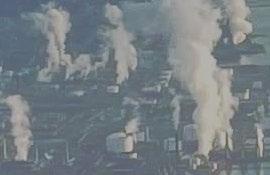


















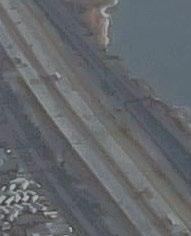
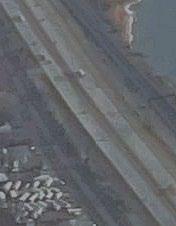













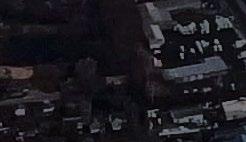

















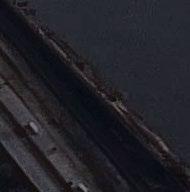

































































































































































Philly Children’s Movement brings diverse authors and perspectives to little free library by constance
The philly children’s movement (pcm), which promotes child-centered activism and social-justice campaigns, including marches, demonstrations and workshops, has further heightened social consciousness through its Radical Little Library, a free neighborhood book exchange box at 601 West Carpenter Lane, outside of the Charles W. Henry School, near the Mount Airy Weavers Way Co-op.
“We stock the Radical Little Library with children’s books written and illustrated by BIPOC, LGBTQIA+ and other marginalized creators,” says Nicole Fisher, 45, PCM’s organizing director. Begun in May 2022, the library has works ranging from picture books for toddlers to fiction and nonfiction for young adults. “The books feature a variety of identities, covering race, class, family structure, sexual orientation and religion,” Fisher says. The library also has stories by and about people with disabilities.
The Radical Little Library puts PCM in step with the nationally known program Read in Color. Little Free Library, begun in Wisconsin in 2009, developed the Read in Color program after George Floyd’s murder in 2020. Like the Radical Little Library, Read in Color features authors, illustrators and topics often sidelined in the past.
“Since Read in Color launched in the Twin Cities in 2020, we’ve shared more than 8,000 diverse books in our home community and established 25 Little Free Library book-sharing boxes,” says Margret Aldrich, director of communications at Little Free Library.” Read in Color has shared 40,000 diverse books nationwide, Aldrich says.
The Radical Little Library and the Read in Color program help redress an imbalance in the publishing industry. The majority of all U.S. children are of color, according to journalist Stacy M. Brown’s article in the April 14, 2021, edition of The Washington
garcia-barrioInformer. However, fewer than 25 percent of children’s books depict characters of color, according to the Little Free Library.
Students in Germantown and Mount Airy seem to enjoy helping with the Radical Little Library.
“I’ve gone with my mom to collect book donations from the book bank and shop for books at thrift stores,” says Asa White, 12, a student at Greene Street Friends School, “[and] I’ve helped refill the library.” White has donated books, including “The Hate U Give” by Angie Thomas.
Books like “Unspeakable: The Tulsa Race Massacre,” by author Carole Boston Weatherford and award-winning illustrator Floyd Cooper, both Black, have had shelf space in the Radical Little Library, but the books represent a range of emotional tones.
“We don’t limit the library to traumatic events,” Fisher says. “We want to tell stories of the joy of people of color, too. It’s part of our mission to uplift diverse children.”
The Radical Little Library achieves several goals.
“It fights book banning, which threatens to silence aspects of the nation’s past and present, such as slavery, Black achievements and violence against religious groups,” Fisher says.
The American Library Association (ALA) bears Fisher out. The record-breaking drive to ban books in 2022 reflects coordinated efforts to muzzle “historically underrepresented voices and deprives young peo-
ple, in particular, of the chance to explore a world beyond the confines of personal experience,” says ALA president Lessa Kanani’opua Pelayo-Lozada.
Besides stocking banned or challenged books, the Radical Little Library lets children see more than the most familiar Black figures. “[Some classes] are MLK-ing me and Rosa Parks-ing me to death,” one student says about all-too-frequent limitations of Black history curriculums.
Books like those in the Radical Little Library can also boost children’s self-esteem, according to Colours of Us and Children’s Library Lady, websites about diverse books for children.
“I love to read, and it feels good when the characters in the book look like me,” Asa White says.
No matter a child’s background, the Radical Little Library can spark curiosity about other cultures.
“Seeing the Radical Little Library has made me more interested in reading books about different cultures,” says Joshua Seales, 12, a Greene Street Friends student. Seales finds other benefits. “Having the library there means that other children who don’t have the same access to books, especially people of color, will be able to read about people who may share their experiences. I haven’t provided books [for the Radical Little Library] yet, but I have one I just finished reading and will probably donate. It’s called ‘Long Way Down’ by Jason Reynolds.”
PCM relies on other events to distribute books to children. The organization partnered with Jeannine Cook, owner of Harriett’s Bookshop and a PCM founding member, by having a table on banned books at the September 2022 launch of “Magnolia Flower,” a new children’s book by Ibram X. Kendi. This adaptation of Zora Neale Hurston’s short story of the same name focuses on a girl of Black and Indigenous heritage.
Seeing the Radical Little Library has made me more interested in reading books about different cultures.”
— joshua seales, Greene Street Friends student
During last October’s Read by 4th Reading Promise Week, when parents vow to help their children become better readers, PCM hosted a Joy & Justice! event in the Jenks Academy for the Arts and Sciences schoolyard at 8301 Germantown Avenue.
The gathering featured author and tap dancer Khalil Munir, raised in South Philly. Munir’s three-part series, “The Crown Is Yours,” is based on his life. He told the audience of largely Black and Brown children that he’s successful despite dyslexia, an important message for children with learning differences.
PCM volunteers gave out free books at this event, some of them by BIPOC authors.
Books are a PCM cornerstone, but the organization has other tools as well. It began a Radical Little Garden last year.
“Children get to see the cycle of food: planting seeds, growing food, harvesting it and putting it in the community refrigerator for families,” Fisher says of the garden, at Germantown Avenue and Pastorius Street. “For our first season in 2021, we grew radish-
and Youth About Race and Racism, and Spotting Bias in Ourselves and Our Curriculum. We also have a six-part series on talking with kids about identity. Children notice different skin tones early, so it’s important to start teaching antiracist concepts early.”
PCM faces challenges in securing funding to grow.
“We’d like to have more children, families and schools involved in racial justice activism,” Fisher says, “but like many smaller nonprofits, we’re working to sustain ourselves post-pandemic. We’ve been blessed with help from several amazing funders, however we’ve been struggling to pull in larger funding to grow and extend our services.” Fisher has also noticed a recent belief that society has graduated beyond issues of race despite continuing racial disparities in the criminal legal system, environmental justice, education and other areas. It makes support even more challenging if funders shy away from antiracism topics, Fisher says.
The passion surrounding radical little libraries—one was blown up in Washington, D.C.—suggests their potential. Consider these book lists:
➤ EmbraceRace, an Amherst, Massachusetts, nonprofit, has webinars and action guides to help raise “kids who are inclusive, thoughtful, and brave about race.” Visit embracerace org/resources and click on “children’s books.”
➤ Little Free Library’s Diverse Books Advisory Group and allies offers “lists of multicultural inclusive books for all age levels.” Visit littlefreelibrary org and click “programs,” then “Read in Color,” then “recommended reading.”
➤ The Black Caucus of the American Library Association has created a reading list of 50 Black comics for all ages. Watch their YouTube video “Black Lives Matter: Comics as a Powerful Lens for Social Justice.”
es, different kinds of lettuce and herbs. The garden ties in with environmental justice. In some parts of Philadelphia you have the food at the corner store, and it may not be fresh. And working in the garden is another chance to bring the community together.”
Besides these projects, PCM has, since its 2015 founding, offered antiracism and social-justice workshops, programs and consultations for schools and organizations.
“We have four core workshops,” Fisher says. “They include Developmental Stages: Understanding Race and Racism, Using Youth and Children’s Media to Build Antiracist Families & Schools, Talking with Children
In the meantime, the Radical Little Library helps develop keener awareness and appreciation of different cultures and ethnicities. Thanks to the library, Philadelphia joins cities like Minneapolis, New York, and Tulsa in promoting education and justice through free diverse books.

“We invite book donations to help sustain the Radical Little Library,” Fisher says. “Community support is a huge part of the library’s longevity.” ◆
To learn more about Philly Children’s Movement, visit phillychildrensmovement.org or email phillychildrensmovement@gmail com
Jay arzu was front and center with Leslie Richards, searching for answers.

He wanted to know why Philadelphia’s transit expansion had slowed to a bumper-to-bumper crawl over the years. As he watched other major cities pour resources into ambitious projects to improve their public transportation infrastructure, he wanted to understand what had derailed Philadelphia’s own effort to dream big. One sidelined project occupied his mind: a sub-
way on Roosevelt Boulevard, first proposed in 1913, that would better connect the Northeast to the rest of the city and reimagine transit in Philadelphia.
As a PhD candidate in city and regional planning at the University of Pennsylvania’s Stuart Weitzman School of Design, Arzu had the good fortune of taking a class last spring with Richards, the CEO and general manager of SEPTA. In all his research on the Roosevelt Boulevard subway plans, he couldn’t locate the one document that would unlock the answers he sought: the 2003 final report from a four-year study analyzing
what it called “the Preferred Alternative,” which would connect a subway or elevated rail line to the Broad Street Line’s express tracks. Richards was able to get him a copy of the document, and what Arzu read catalyzed him.
“Within a few minutes, I was floored,” Arzu says. “The numbers were a lot larger than I had anticipated.”
Rather than an explanation for why the subway hadn’t yet been built, what he found was further evidence that it should be. The engineering, consulting and design firms that wrote the report and submitted
it to SEPTA and the City’s Office of Strategic Planning estimated that a subway on Roosevelt Boulevard would attract 124,500 daily riders and halve the time of a trip from the Northeast to Center City, while saving drivers and transit users nearly 13,000 hours of travel time and eliminating more than 83,000 car trips each day. It would be among the most heavily trafficked new rail lines in the country.
The cost was enormous — the equivalent of nearly $5 billion today, according to the report — but so was the potential to change the city’s infrastructure and its attitude. In
the subway, Arzu saw an opportunity to inspire Philadelphia and its residents to strive for greatness instead of settling for mediocrity.
“I want Philadelphia to show the rest of America how to build subways in the 21st century,” Arzu says. “This is a city that has a lot of pride. I don’t think anything would

I want Philadelphia to show the rest of America how to build subways in the 21st century.”
— jay arzu, doctoral candidate in city and regional planning at the University of Pennsylvania’s Stuart Weitzman School of Design
make the city more proud than to get the Roosevelt Boulevard subway completed.”
For years, the boulevard has been the most dangerous road in Philadelphia, a 12lane corridor through diverse residential neighborhoods and business developments that functions like a highway with crosswalks. It’s a nightmare for pedestrians and drivers alike, accounting for as much as 21% of the city’s fatal crashes in a given year.
The subway offers Philadelphia an opportunity to change the boulevard’s future for the better, creating thousands of jobs, helping the environment by taking cars off the road and reducing traffic to an extent sure to save lives. Its proponents also tout the subway’s potential to energize the city and restore vibrancy to the Northeast, where a lack of rapid transit is an obstacle to everything from educational opportunities to health care access.
“My goal is to turn the Boulevard of Death into the Boulevard of Life,” Arzu says.
Standing in Arzu’s way are a dearth of funding, a backlog of transit projects still waiting for the green light and a city government that has long struggled to address day-to-day civic struggles, let alone revolutionary, record-setting initiatives like the Roosevelt Boulevard subway.
But any vision of a more robust and inspired Philadelphia in 2030 and beyond includes significant steps forward in transit infrastructure. As mayoral candidates begin throwing their support behind the subway — and with PennDOT committing to a feasibility study — an idea that spent decades collecting dust has been brushed off and revived, offering a window into the city’s possible future.
Arzu grew up in public housing in the South Bronx, New York. His community didn’t have much, he says, but what it did have was transportation access. He could go anywhere he wanted in the city, and that freedom gave him a deep appreciation for subways and public transit.
Coming to Philadelphia, he says, “was like night and day.” Before pouring his attention into the Roosevelt Boulevard subway, his research and activism were focused on protecting neighborhoods from the com-
munity destruction wrought by disruptive highways. A self-described “freeway fighter,” he worked with community members in Rochester, New York, on the redevelopment of a section of its Inner Loop expressway, intended to reconnect neighborhoods, and alongside advocates in New Orleans who are seeking to remove the Claiborne Expressway that fractured the historically Black Tremé neighborhood.
After coming to Philadelphia, he was stunned to see how long the Northeast had been waiting for the subway to be built. His dissertation is unrelated to the subway, and his advocacy has nothing to do with self-interest, he says.
“I’m here to be civic and to do what’s right for a community that’s been waiting for over 110 years,” Arzu says. “That is appalling.”
When he began calling around to local elected officials last year to ask what stood in the way of making the Roosevelt Boulevard subway a reality, he didn’t always find the support he sought. City Councilmember Kenyatta Johnson’s office responded with an attitude that demonstrates the power of inertia in Philadelphia.
“They laughed me off the phone and didn’t take me seriously,” Arzu says. “They took me as a joke.”
But Arzu doesn’t think there’s anything funny about building the subway, and he found an ally in Pennsylvania Rep. Jared Solomon, whose 202nd District is bisected by the boulevard. He believes the subway represents a genuine opportunity for progress in a city that seems to be always in search of something great to believe in. Speaking in the wake of Phillies and Eagles postseasons that united the city, he suggests that the subway could do something similar.
“People here are so desperate for hope and optimism and something big and positive,” Solomon says.
On a Saturday morning in August, Solomon and Arzu were part of the first town
hall in years to seek public input on the dormant plans for a subway line to the Northeast. By the time it kicked off at 9 a.m., there was a buzz in the room, says Cameron Adamez, a transit committee member for urbanist political action committee 5th Square. And by the time it ended, despite the usual concerns raised about traffic and noise, it was clear that many residents wanted the subway built.
“It cemented that this community has never really been asked what they want,” Adamez says, “but they do actually want it.”
Even Arzu, ever an optimist, expected opposition that he says never truly came — a testament to the feeling of disconnection that permeates the community. But the lack of support he found in the city’s political establishment revealed that the community and many of its elected officials may not be on the same page.
“They don’t really see the potential for public transit to be a transformative thing for an area that is extremely underserved,” Adamez says. “The Northeast in general and Philadelphia as a city are underserved, and public transit is a key to this.”
Few projects could address those deficiencies while defining a legacy quite like the subway.
“If a politician said, ‘I’m going to put down the Roosevelt Subway,’ and it gets done, then they’ve cemented their career,” Adamez says. “And I don’t see that coming out of anyone other than Rep. Solomon.”
Roosevelt boulevard is already constructed for rapid transit, Solomon says, with a median wide enough to build the subway with a cut-and-cover approach that would be cheaper than boring a new tunnel.
“We as policymakers have just not had
People here are so desperate for hope and optimism and something big and positive.”
jared solomon, State Rep. of Pennsylvania’s 202nd District
 PA State Rep. Jared Solomon is willing to throw his much-needed political weight behind making the Roosevelt Boulevard subway a reality.
PA State Rep. Jared Solomon is willing to throw his much-needed political weight behind making the Roosevelt Boulevard subway a reality.
the courage and the political will to get the job done,” Solomon says.
He wants to be the one to finally lead that effort and turn Roosevelt Boulevard into what he says “could be the most beautiful public works project in the nation.” Done right, he says, the subway could be surrounded by green spaces, public art and businesses ready to thrive in more accessible neighborhoods.
To Solomon, the subway is also an opportunity to think big about how government can make a difference in people’s lives. He wants the City and its power brokers to stop playing to the lowest common denominator.
“When they see a big price tag, Denver, Los Angeles, Boston and New York say, ‘Yes. How can we get this done?’” Solomon says. “And in Philadelphia we say, ‘No, it’s impossible.’ Of course this is possible, but it requires people to band together and not accept ‘no’ as an answer.”
In his mind, if you build it — or, at least, if you make plans to build it — the support will come.
“What other cities do is play toward a large, overarching vision. They don’t just play to dollar signs,” Solomon says. “They get the vision right, they get people to buy in, and then they find a way to execute. We’re not doing that right now.”
Leslie richards raised eyebrows around the city in January when she said SEPTA can’t afford the Roosevelt Boulevard subway. To some, it seemed like the death knell for a project that had only recently re-entered the public consciousness.
“The thing is, she’s correct,” Arzu says.
SEPTA’s capital budget for this fiscal year is around $1.1 billion. Christopher Puchalsky, the director of policy and strategic initiatives for the City’s Office of Transportation, Infrastructure and Sustainability, who was among the speakers at the first subway town hall, says peer agencies across the country have budgets two to three times as large to invest into their systems.
“We’re trying to keep this system together on pennies,” Puchalsky says.
It would be an understatement to call it a shoestring budget, Arzu says: “They don’t even have shoestrings.”
SEPTA did not respond to repeated requests to comment for this story.
Arzu identifies two potential paths toward finding the requisite funding for the subway, which Puchalsky says would cost in the neighborhood of $7 to $10 billion if it were built today. One is a transit referendum like those passed or proposed in Denver, Seattle and Atlanta to use sales tax to fund expansion. The other is a more serious effort to pony up the matching funds that would attract federal resources for capital investment — resources that are currently going to other cities and other projects.
“The bottom line is the boulevard subway seems like it could be a transformative project if a few billion dollars were to fall out of the sky,” Puchalsky says.
Instead, SEPTA and the City are focused on spending what little money they do have on addressing a nearly $5 billion backlog of repairs, Puchalsky says, including upgrading trolleys and replacing outdated cars on the Market–Frankford and regional rail lines. Trolleys, in particular, are overcrowded and don’t meet the accessibility requirements of the Americans with Disabilities Act.
“There’s a lot we need to make of the existing system before we spend significant sums on system expansion,” he says.
Owing largely to the size of the project, the subway doesn’t have full-throated backing from the advocates at Transit Forward Philly. The organization has yet to take an official stance, although advocacy director Yasha Zarrinkelk acknowledges that he and his colleagues will support any project that offers more accessibility to residents whose only transit option right now is the bus. But with so many other projects still waiting to be completed, the subway isn’t an immediate priority.
“The project is so massive that it’s a little bit hard to fully prioritize when there’s a backlog of state-of-good-repair projects that SEPTA faces right now,” Zarrinkelk says.
As for the Roosevelt Boulevard subway, the growing support is an indication of its potential — if not the final word on its feasibility. Organizers held a second town hall last October, and a third was planned for late March.
“The riders have spoken, and if PennDOT and SEPTA and the City can all get on board for this project, it could be huge,” Zarrinkelk says. “But that’s a major and difficult hoop to jump through.”
As much as Solomon wants to see the Roosevelt Boulevard subway built for all of its tangible benefits, he also believes it could help shake loose Philadelphians’ ingrained belief that big dreams are only fulfilled in other cities.
“People are mired in the day-to-day,” Solomon says. “When gun violence rages, when educational attainment declines, when your trash isn’t picked up, when code enforcement doesn’t work, when you don’t feel like you have a partner to pick up your abandoned cars or to address abandoned homes, what people feel is a sense of learned helplessness.”
What Philadelphia needs, he says, is someone — or perhaps many someones — to offer the type of vision that can overcome years of frustration, anxiety and angst to catalyze the City and its residents toward a new way of thinking. The subway could be a part of that process.
Solomon has seen how it can work, right in his own backyard. The Tacony–Palmyra Bridge, the Market–Frankford El and even Roosevelt Boulevard itself all showed how a grand vision can lead to grand results.
“At the time these were big, soaring ideas that everyone said were never going to happen. But because of political ingenuity and political will they did happen, and the Northeast and the region were better for it because they connected us in a very meaningful way,” Solomon says. “There were naysayers at every turn on each of those projects, but we were able to get them done and we were able to build a city. That’s why this project is so important — because it would do the same.”
Despite the funding woes and the stubborn City politics, despite the fact that the Roosevelt Boulevard subway has existed in the theoretical realm for more than a century now, Arzu believes it can finally become reality. And he doesn’t want Philadelphia to stop there.
“Building the Roosevelt Boulevard subway is only the first step of many to building out a full-fledged metro system that will better connect Philadelphia and better integrate with other transit modes,” he says. “We’re going to have an amazing system here that’s going to be the envy of other cities.”
It won’t happen by 2030. But after a century of planning, politics and postponements, what’s a few more years? ◆











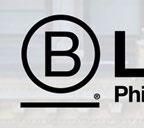















across the river, somewhere in the vicinity. I tried to picture that and failed: force of that kind is hard to imagine possible.
In september 2019 I plopped into a kayak and pushed off the eastern banks of the Schuylkill River in Center City, ready to see Philadelphia in a brand new way. Part of an annual excursion that launches paddlers from the Schuylkill Banks on Walnut Street, sends them down around the Navy Yard and then back up the Delaware to the Seaport Museum, the trip promised a duck’s eye view of the entire rim of the city’s lower half. What an eye-opener it turned out to be. Lively, scenic views of joggers and pic-
nickers set against the city’s skyline quickly gave way to something else as we floated toward South Philadelphia. The green visages of Bartram’s Garden turned into the beige cement and cold steel of heavy industry. The river browned and bubbled with some kind of gas seepage from unseen origins. The passageway became stuffy, stifling, odiferous.
Three months earlier a massive explosion at the adjacent Philadelphia Energy Solutions (PES) oil refinery had hurled a 38,000-pound piece of metal all the way
But these days, imagination is exactly what’s called for in South Philadelphia. Approaching four years since the explosion and fires shuttered what was then the largest and oldest petroleum refinery on the East Coast, the dust has yet to settle on what will become of the prominent vestige of the city’s dirty industrial past. Following bankruptcy filings, the roughly 1,300-acre PES site was scooped up by Hilco Redevelopment Partners, a subsidiary of Hilco Global, for $225 million in 2020. It quickly became evident that the new owner’s primary intentions were to convert the site into a logistics hub (picture cavernous, Amazon-style warehouses) and a Life Sciences campus (think medical and pharmaceutical companies doing R&D).
But in the absence of any public plan for a full buildout of the parcel, which represents nearly 2% of the city’s land area, community organizations, academics, city planners and neighboring residents were able to dream
Will the new owners of the shuttered PES refinery bring blue skies or dreams denied to South Philadelphia?The 2019 PES oil refinery explosion in South Philadelphia opened the door for a brighter future after more than a century of fossil fuel pollution. But four years later, many questions remain unanswered by new owner Hilco Redevelopment Partners.
about what else could be. Perhaps the popular Schuylkill River Trail could be extended all the way to the Navy Yard. Maybe natural wetlands could be restored, beautifying the river and guarding against the encroaching floodwaters of climate change. And on a long enough timeline, perhaps some-

thing resembling a vibrant cityscape could emerge: recreational parks, mixed-use development, maybe even residences.
These are dreams of a greener, cleaner future for South and Southwest Philly that still remain alive. But along the river’s edge, seeds of doubt have also taken root.
Harris Steinberg, executive director of the Lindy Institute for Urban Innovation at Drexel University, is among a class of urban planners who see the former PES site as the most critical parcel to come up for grabs in the city’s recent history.
“This is not just a question of how the City, how the developer and how the community thinks about redevelopment for the next 10 or 15 years. This is a 100- to a 150year play,” Steinberg said during a February interview. “It’s an extremely important and strategic site in Philadelphia, probably the most important site right now.”
Funded by the William Penn Foundation, the Lindy Institute paired with the Philadelphia environmental nonprofit Clean Air Council in 2020 to release a report “revisioning” what the site could look like. Building on input gathered through a number of public meetings and workshops, the report called for specifics like extending the Schuylkill River Trail and turning a portion of the Schuylkill Expressway into a more pedestrian-friendly “surface boulevard” at the site. But its greater vision was more holistic: re-integrating the closed-off site into the city through street gridding, access to public transportation, and beautification measures.
In this way, the report said, the redevelopment could run parallel to the Navy Yard and the Delaware River waterfront around Penn’s Landing, a plan for which emerged after a decade-and-a-half of collaboration and public engagement.
“That could provide a template for how the city can create a framework for longterm growth on privately held land, which advances both public benefit and development potential,” the report concluded.
While the City could not directly tell Hilco what to do with the land, the report found, it could influence development with a toolkit of both carrots, such as tax breaks and purchasing agreements, as well as sticks, such as strict road planning approvals.
Three years later, it’s unclear how fully Hilco or the City has taken the suggestions into consideration. The Lindy Institute remains cordial with Hilco; in March, Steinberg and Hilco Senior Vice President of
It’s an extremely important and strategic site in Philadelphia, probably the most important site right now.”
— harris steinberg, executive director of the Lindy Institute for Urban Innovation at Drexel University
Corporate Affairs Jasmine Sessoms participated in a public conversation on urban planning over Zoom. Even still, in his interview with Grid, Steinberg betrayed some dissatisfaction that he had yet to see a longterm master plan for the site.
“I know they’ve done at least one, but I don’t think they’ve made it public,” Steinberg said. “I think they are mindful, I think they definitely have been listening … , [but] not much has been made public.”
City Hall has also laid out its vision for the future of area, and is now similarly waiting to see how closely Hilco will adhere. Over the past decade, the Philadelphia City Planning Commission produced a series of

planning documents for the area as part of its 2035 master plan. Matt Wysong, a senior planner with the commission, said so far Hilco’s proposals largely square with what the plans envision: the attraction of modern industries to keep that section of the city an economic and employment powerhouse.
And while Steinberg, nonprofits like the Clean Air Council and community groups have expressed to varying degrees a perceived lack of leadership from the City, Wysong said the Planning Commission does in fact share many of the same goals.
To wit, he said the commission also wants to see public open space along the riverfront, quality pedestrian and bicycle infrastruc-
I’ve lost friends from various illnesses and cancers.”
— mark clincy, West Passyunk resident and activist with Philly Thrive
ture and public access to the waterfront.
“We want … ample connections to the site from adjacent neighborhoods in South Philly,” Wysong said. “Not only to get to jobs, but also to connect to the river and get some concept of public open space.”
Beautification and protection from flooding also remain priorities, Wysong said, with the site holding key aesthetic real estate as city residents and visitors alike pass by on their way to and from the airport and Navy Yard.
Wysong said the City has also taken action. Last year, City Council overhauled parts of its tree and landscaping regulations to require developers, including Hilco, to
plant more trees. Even more directly, he said, City Council, the Streets Department, the Planning Commission and other agencies earlier this year reviewed a proposal from Hilco to lay out key new roadways across the site.
In its submission, Hilco proposed running a roadway along the waterfront that could restrict extension of the river trail. The commission asked for it to be set back from the river’s edge to keep open the possibility, Wysong said. He added that the commission and Streets Department also requested changes to the roadways to make them more pedestrian and bicycle friendly, a stipulation that the Streets Department could actually require during later planning processes.
“I think we’re all in agreement of the concept of introducing public streets on the site,” Wysong said.
How does one repair trust with a community after a century or more of mistreatment?
It’s a tough question, and one that also remains open.
Pollution has long been a public concern at the sprawling former PES site, where oil refinement started as early as 1866, more than a century before environmental regulators such as the United States Environmental Protection Agency and Pennsylvania Department of Environmental Protection arrived on the scene. With that kind of history comes a dark mass of potential hazards to humans and nonhuman animals alike, as toxic substances like benzene, lead and PFAS chemicals haunt the air, land and water.
Mark Clincy, a West Passyunk resident whose apartment building is less than a quarter-mile from the refinery, has been cognizant of risks from the site for decades. A former West Philadelphia resident, he recalled explosions and other issues from the plant as early as the 1970s and ’80s.
In 2019, the final explosion rattled his windows and triggered a shelter-in-place phone call from the fire department, although he later wished he had been evacuated.
“You’re talking about benzene gas, and that’s not a joke,” Clincy said. “I’ve lost friends from various illnesses and cancers.”
After the explosion, Clincy became active in Philly Thrive, an environmental organization that for nearly a decade has bird-dogged the refinery over the risks it presents to pre-
dominantly Black fenceline communities. The group held protests before and after the 2019 explosion, calling for an end to the refinery and fossil fuel pollution. More recently Philly Thrive has spoken out against Hilco’s cessation of air monitoring at the site, even after 2022 testing still showed stubbornly high benzene levels.

The current state of wider community opinion is unclear. Philly Thrive had been part of the United South/Southwest - Coalition for Healthy Communities, a collection of about 20 community groups that organized in 2021 around the refinery’s closure and redevelopment. A shared sentiment was anger and fear. Like Clincy, various members of the groups relayed heart-wrenching stories of brushes with asthma, cancer and death to both local media and global publications like The New York Times.
The coalition’s primary request of Hilco was the development of a community benefits agreement (CBA), an oft-practiced but not legally required process to secure commitments from a developer to invest in and respect the wishes of the surrounding community.
After few signs of progress with Hilco in 2021 and 2022, the company revealed last fall its intentions to begin negotiations on a CBA this year. Some community groups told reporters they viewed this as progress; the coalition’s website has lain dormant since last summer.
But Philly Thrive has since left the coalition to pursue “direct action.” In October, seven of its members were arrested as they protested an oil tank farm on the river’s west banks that Hilco is still operating.
Philly Thrive continues to speak out against the amount of truck traffic the warehouses will create and subsequent air pollution in surrounding neighborhoods.
“The scale of warehousing Hilco plans is a threat to our health. Twelve-million square feet of warehouses would bring hundreds of diesel trucks through our neighborhoods daily, polluting our air with cancer-causing exhaust,” said R. Merriman-Goldring, communications coordinator for Philly Thrive. “And warehousing requires paving and hardening the surfaces, which will result in more flooding in South and Southwest neighborhoods. … We need better flood protection plans and the carbon-free development we were promised.”
After a history of 150 years of environmental pollution, continuing fossil fuel operations and a future of profit-focused development, it would be easy to conclude that Hilco is another in a line of bogeymen.
What’s harder is ascertaining to what extent that’s warranted.
When the refinery went bust in 2019, it took an estimated $2.1 billion in economic benefits for the city with it, including about 1,100 direct jobs each averaging more than $100,000 in salaries, along with another estimated 5,000 indirect jobs, a Citycommissioned analysis found
It also left behind a tangled maze of physical wreckage. To convert the site into anything other than a massive oil refinery, more than 100 buildings, 3,000 tanks and vessels and 950 miles of pipeline would have to be dismantled, asbestos coating much of it.
And it wasn’t clear from the beginning that petroleum operations would even
Philadelphia’s best interests at heart and a brighter future in mind. Deeming its redevelopment the “Bellwether District,” Hilco said in a statement to Grid that it will offer a “historic transformation of the former PES Refinery into a 1,300-acre state-of-the-art campus that will serve as Philadelphia’s new home for e-commerce, life sciences and logistics leaders.”
As of early March, Hilco had demolished more than 88% of the facility’s former tanks and more than 91% of its pipes, the company said, and removed more than 99% of its petroleum products. It calculated that secession of the bulk of operations dropped the city’s total carbon emissions by 16%.
Hilco also claims redevelopment will generate an estimated 19,000 direct jobs and generate millions in tax revenue, all while supporting local workforce development programs. With community relations, the company says it’s progressing and confirmed to Grid that it agreed during a fall
importantly, how will it make the site safe? Hilco and Evergreen, a Sunoco subsidiary still on the hook for most of the cleanup at the site, are already in the middle of a massive environmental investigation and remediation process. A full assessment of potential human health hazards from legacy pollution and how it will be dealt with has yet to be completed. That will, in turn, determine what kinds of land uses are safe for the site.
Idling in the background is the incoming threat of air pollution from truck traffic. The City’s Wysong says at present it appears trucks will be entering and leaving the warehouse facilities via South Philadelphia neighborhoods; while some have floated the idea of a new direct interconnection with I-76, no such proposals currently exist, he said.
Grid sent Hilco questions on each of these topics and more, such as whether it performed in-depth modeling of future flooding conditions under climate change. Hilco left many inquiries unanswered or spoke only in generalities.
cease. When the refinery previously nearly went belly up in 2012 under former owner Sunoco, it was saved by a massive injection of private equity, facilitating another seven years of large-scale petroleum refinement and all the carbon emissions and air pollution that come with it. There was nothing precluding that from happening again in 2019.
Other possibilities lurked. When industrial heavyweights like U.S. Steel began pulling out of thousands of acres of land along the Delaware River in Lower Bucks County a generation ago, the waste industry swooped in to create what is now the largest landfilling and trash incineration hub in the state. Prevailing winds carry odors of methane and other gasses into New Jersey. Here they would likely first blow across South Philadelphia and Center City.
Hilco is doing its best to promise it has
2022 “Community Advisory Panel” to “voluntarily commit” to a community benefits agreement.
“We look forward to working alongside our neighbors in building a future with less pollution, more jobs and greater opportunity for Philadelphians,” Amelia Chassé Alcivar, executive vice president of corporate affairs at Hilco, said in a statement.
The problem one runs into, over and over, is transparency. Hilco has produced a library of slick renderings, videos and other materials showing a green and gridded future site. They look inarguably better than the industrial wasteland that was left after the 2019 explosion. But those are just pictures, not proof.
In reality, truth will first be born out in the paperwork: what plans for laying out streets, planting trees and allowing public access will Hilco put forth? Perhaps most
Examining the whole picture, there’s enough there, or more accurately not there, to make one wonder. If Hilco intends to meet one of the most ubiquitous requests — extend the Schuylkill River Trail — why did it submit an initial road plan without a necessary setback from the waterfront? Why, three years in, are the Planning Commission and Streets Department only beginning to tango with Hilco on the accessibility of the roads that will go in? Why is there no detailed master plan publicly available? What will become of the tank farm? Why does Hilco evade questions on how the company will account for truck pollution?
On one hand, Matt Walker, community outreach director for the Clean Air Council, understands that Hilco may just be trying to maintain flexibility as it’s still navigating a tricky landscape in which multiple stakeholders and forces are pulling it in different directions. On the other hand, that still leaves everything feeling like it’s up for grabs.
“What we need right now is a bold, comprehensive plan, with full public input, for the long-term future of this site. … Becoming resilient to the worst impacts of climate change, while also ensuring healthy, just, safe and thriving communities,” Walker said. “We do not yet have this vision.” ◆
We need better flood protection plans and the carbon-free development we were promised.”
—
r. merriman-goldring, communications coordinator for Philly Thrive
















Philadelphia’s government is replete with plans to make the city more environmentally friendly. From climate change resilience, to reducing traffic fatalities, to urban agriculture, the City, its consultants and community stakeholders have spent enormous amounts of time and brainpower contributing to and drafting plans to make this a more sustainable city. It is intoxicating to imagine what the city would look like if all these plans were implemented.
But drafting a plan is just a starting point, and generally a lot easier than effecting change on the ground. Even well-intentioned leaders could run into unforeseen hurdles when it comes time to turn the plan into action.
Plans don’t carry the force of law, and they don’t necessarily translate into the political will to reach their goals. A cynical observer might interpret planning as something City leaders do to placate pesky advocates rather than actually expending the political and financial capital it takes to implement real change.
The new mayoral administration will need to decide what to do with the tall stack of plans it will inherit: which it will ignore, which will receive only lip service and which it will commit to.
Grid counted at least 20 such plans, as well as a couple of important initiatives worth mentioning. Although there are more plans than Grid can explore in one article, let’s take a look at some of the big ones.
In November 2022 the City released a long-awaited urban agriculture plan draft It was released on the website of Soil Generation, a Black and Brown led coalition of growers tasked with drafting the plan with consulting firm Interface Studio. The first public meeting for the plan had taken place in December 2019. The pandemic and other

delays pushed the planning process back, and ultimately what came out toward the end of 2022 was a draft. More public input followed, including a December 3 Zoom meeting to present the draft plan.
The primary problems that the plan focuses on will come as no surprise to anyone involved with growing produce on vacant land in Philadelphia: food insecurity is concentrated in low-income Black and Brown neighborhoods, and growers there generally lack ownership of the land on which they raise crops. Gardens are particularly vulnerable in neighborhoods where gentrification and demand for more housing drives developers to build on the vacant lots
that longtime locals have been caring for, sometimes for decades. Growers also need infrastructure (greenhouses, water, electricity, etc.) and struggle with low wages for agricultural work, among other challenges.
The draft plan calls for several ambitious actions. There are 25 alone under the land section, such as reducing the loss of growing space on private land sold in sheriff’s sales and creating a City land code specific to agriculture. None are final, though, since the plan is still a draft. A Parks & Recreation spokesperson told Grid that the final report is due in the spring of 2023.
At the end of 2016 the Kenney administration issued a plan to cut the city’s waste stream down to zero by 2035. The goals went beyond simply picking trash up on time, getting litter off the streets and stopping illegal dumping. Getting to zero waste also meant increasing recycling and composting and coming up with creative solutions to cut back on everything we throw away. The strategy spelled out in the plan focused on waste reduction and diversion in buildings and events, engaging the public in reducing and diverting waste, and developing citywide programs to cut waste, say by establishing an organics collection program for composting.
At the heart of the plan was the creation of the Zero Waste and Litter Cabinet, a multidepartmental team chaired by a staff position (filled by Nic Esposito, until recently Grid’s director of operations) that could set targets for waste reduction and coordinate to solve problems that cut across the city government.
One thorny waste conundrum was how to tackle illegal dumping, a problem whose solutions necessarily involve multiple departments including the Streets Department (which functions as the City’s sanitation department), the police department, the district attorney’s office, and Parks & Recreation, whose parks are where a lot of trash gets dumped. The cabinet studied the problem and worked out how to fight it, for example by having the police department dedicate detectives to environmental crimes and ensuring that the DA’s office devoted attention to prosecuting the cases once the police had finished their investigations.
Up until 2019, it was going pretty well. Successes included developing plans for a city composting pilot, working with City Council to pass legislation to better regulate the tire waste stream (tires are often dumped illegally), and working with City building managers to identify barriers to recycling for City staff and for the public at their facilities. Then the pandemic hit, and the Kenney admin-
istration, citing budget constraints, cut the staff position coordinating the cabinet and the plan, thereby effectively dissolving the Zero Waste Cabinet. Reporting on progress toward the zero waste and litter goals ceased, making it hard to evaluate progress, and it appears that the cabinet’s initiatives have largely fallen by the wayside. Recycling in the city has declined to 2007 rates, and although the Streets Department has touted a recent civil prosecution of an illegal dumper, consequences for dumping remain rare.
The Climate Action Playbook collects action items from other City plans that have something to do with climate change, making it a compendium of plans rather than a plan on its own.
Climate change is the biggest environmental challenge facing Philadelphia and its residents, and it’s hitting the city from all sides. As a warming climate drives more moisture and energy into the atmosphere, storms are growing more intense, bringing extra rain in heavy doses to a landscape with flooding and stormwater drainage problems. Sea level rise will increase flooding along Philly rivers: the Delaware is tidal along its entire course in Philadelphia, as is the Schuylkill up to the Fairmount Dam. Rising water levels will exacerbate storm surges pushed upriver by hurricanes.
No natural disaster kills more Philadelphians than heat. As the city warms, heat waves could claim more lives, particularly in neighborhoods with less tree canopy, disproportionately inhabited by Black and Brown Philadelphians.
As a compendium of plans, the playbook contains many wide-ranging action items that it divides into three categories: reducing greenhouse gas emissions, increasing the use of nature to soak up carbon and adapting to the changing climate.
The City has some small successes to point to in reducing greenhouse gas emissions,
though many of these consist of further planning, benchmark setting and strategizing. For example, one success is the release of a clean fleet plan that aims to shift the City’s fleet of 6,400 motor vehicles to electric, but it remains to be seen how quickly the City will actually shift to an electric fleet. In the meantime, the City lacks a plan to encourage private electric vehicle ownership. The city government has seen more success in reducing emissions from its built environment. The 2022 Municipal Energy Master Plan update reported that electricity and heat consumption and greenhouse gas emissions are dropping in government buildings.
In the meantime, other City initiatives march forward that increase greenhouse gas emissions with apparently little thought of climate impact. For example, the Cityowned Philadelphia Gas Works continues to work to expand the use of fossil gas in the city, and the airport is expanding its cargo facilities, thus promoting the most carbon-intensive way to ship.
When it comes to using nature to soak up carbon, the City strives to increase the tree canopy, but it fails to protect existing canopy, even in its own parks (see the March 23 Tree Plan release article at gridphilly.com).
When it comes to resilience, the City places businesses and residents in the path of future disasters, most glaringly in the rapidly developing Navy Yard and on Venice Island. Meanwhile environmental justice neighborhoods like Eastwick have found themselves further exposed to future flooding as tree canopy upstream in the Darby-Cobbs watershed is cleared for City golf course renovation. In recreation sites, heat-absorbing grass fields are increasingly replaced by artificial turf that instead reflects heat right back out, turning playing fields from oases into ovens.
The City’s 2017 All Hazard Mitigation Plan, which aims to reduce the impact of disasters, included an objective to “integrate hazard and risk information into land use planning mechanisms” that was basically repeated in the 2022 update: “integrate hazard and risk information into land use planning decisions.” Nonetheless it is hard to find a development project that has been halted by climate resilience concerns, calling into question the will of City leaders to sincerely follow through on any plans in the playbook. (In a rare example, in 2012 Eastwick residents
successfully fought off development plans in their flood-prone neighborhood.)

Vision Zero seeks to eliminate traffic deaths through a systems approach. Motorists, pedestrians and cyclists sometimes make mistakes, but a properly designed system will minimize and account for those errors and prevent accidents. The movement got started in Europe but has gained momentum in the United States. In Philadelphia, Vision Zero seeks to eliminate traffic deaths by 2030. Philadelphia has a high rate of traffic deaths compared to peer cities (6.3 per
100,000 residents — twice as high as that of New York City). Vision Zero seeks to take that number down to zero by slowing cars, designing roads to be predictable for all users, promoting the use of safer vehicles and using quality data to identify dangerous roads. It particularly targets the 12% of Philly roadways responsible for 80% of traffic deaths (the “high injury network”) with improvements such as head start walk signals, protected bike lanes and speed cameras. It also emphasizes technologies such as red light cameras to enforce traffic laws rather than active policing, given the racist application of traffic laws and increased risk of police violence for drivers of color.
Vision Zero had a positive impact on traffic deaths (not including those on interstate highways), which dropped from 98 in 2016 to 83 in 2019. Then the pandemic happened, and, as anyone living in Philadelphia for the past three years knows, pandemonium ensued. Traffic deaths spiked to 156 in 2020. Including on the interstates, traffic deaths went from 91 in 2019 to 166 in 2020, according to a Bicycle Coalition report. They’ve been dropping since then, with 125 in 2022. Other troubling trends have emerged, however, with increasing numbers of drivers leaving the scene of fatal accidents.
When it comes to resilience, the City places businesses and residents in the path of future disasters.
In 2011 the Philadelphia Water Department adopted a plan, Green City Clean Waters, to reduce the amount of sewage that flows into waterways. Most of the city’s water management needs are met by a system that combines stormwater and sewage. Heavy rains overwhelm the system, forcing combined stormwater and sewage to be released into creeks and rivers — about 14 billion gallons per year before Green City Clean Waters. Green City Clean Waters uses “green” infrastructure — trees and other vegetation — to soak up or slow rainwater, since reducing the volume of stormwater entering the drainage network should cut the combined sewage overflows. The green infrastructure supplements “gray” infrastructure fixes to
pipes, treatment plants and other structures that the City is also making.
The Philadelphia Water Department celebrated the 10-year anniversary of Green City Clean Waters in 2021, and its 10-year progress report (submitted in May 2022 after an extension granted due to the COVID-19 pandemic) to the Pennsylvania Department of Environmental Protection and the United States EPA shows that the city is on target in reducing the volume of the stormwatersewage soup that pours into local waterways, so far cutting it by about 3 billion gallons. Grid asked the Water Department how much of that reduction can be attributed to the green infrastructure. According to a spokesperson, it is nearly impossible to separate the impact of the green infrastructure from the gray. To be clear, greening a city provides more benefits than just stormwater capture. More trees and rain gardens using native species help support local biodiversity and provide beauty and cooling shade to neighborhoods across the city.

The Environmental Justice Advisory Commission is not really a plan, but as a critical environmental initiative it needs support from the next mayor. The importance should be obvious. The impact of environmental problems such as pollution, flooding and dangerous summer heat, to name a few, fall disproportionately on the shoulders of Black and Brown communities. Prominent examples include Gray’s Ferry residents who have lived next to the Philadelphia Energy Solutions refinery complex, inhaling everything it pumped out, and residents of Eastwick, who have had to deal with flooding, rampant illegal dumping and pollution from the Clearview landfill. The city government needs to understand and work to address the con-
cerns of environmental justice communities. City legislation created the commission in 2019, and it was launched in February 2022.
Although it took a while to get off the ground, the commission is now taking action. As an advisory body it can elevate concerns and solutions, but it cannot force action. Its impact depends on what City leaders do next. Will the next mayor listen?
What’s the Plan?
Operations, including maintenance, is woefully underfunded at Philadelphia Parks & Recreation facilities, and it has been for decades. Little things fall apart and don’t get fixed; big things get patched in temporary ways. It all adds up to what people in government refer to as “deferred maintenance.” For people served by the government, it adds up to broken playground equipment, dank and smelly recreation center bathrooms and environmental centers closed through the winter because there’s no heat. Rebuild, an initiative launched in 2017 as a marquee program of the Kenney administration, promised a solution. A capital program (there is a technical but critical distinction in budgeting here — operations budgets mostly come out of taxes, while capital budgets are generally funded by government debt, i.e. selling bonds) would pay for renovations to run-down park and recreation facilities and libraries. The City would make payments on the bonds with proceeds from the sugary beverage tax. Problem solved! Back when it was launched, Rebuild was budgeted at $500 million, which included $300 million from the bonds plus another $200 million from foundation grants and other fundraising. That would pay for renovations for 150 to 200 facilities.
Right out of the gate Rebuild ran into its first hurdle, and it was a big one. Opponents of the sugary beverage tax sued to stop it, and the City banked the sugary beverage tax proceeds for two years until it won the lawsuit, since it didn’t want to be stuck with a whole lot of bonds it couldn’t afford to pay back. In 2018 the City started issuing bonds, and construction got moving, albeit slowly. Then the pandemic hit, and with it an economic roller coaster of supply chain disruptions (remember the spike in lumber prices in 2021?) and inflation. Now it looks like the City will be able to address 72 projects.
But even if Rebuild had met all its initial goals, it was never in its mandate to solve the fundamental underlying problem, which is that the City woefully underfunds the maintenance of its parks and recreation center infrastructure. Back in 2016, the William Penn Foundation (which funds Grid ) provided $100 million to Rebuild and funded a strategic plan that sought to improvebParks & Recreation’s maintenance system. As Grid has reported in articles about inequity in parks maintenance, the department still suffers from a massive deficit of funding compared to its needs. Shiny new recreation centers, playgrounds and playing fields will all fall apart without proper maintenance, just like everything else in the parks and recreation system. To give Philadelphians the parks, pools, playgrounds and rec centers that they deserve, now and in the future, the next mayor and City Council will need to fully fund operations and maintenance.
appliances and make the switch to electric fuel for cooking and for heating their homes and water, demand for gas is falling. Moreover, emissions from burning methane (the primary fossil gas that PGW sells) are an important part of the greenhouse gas puzzle the City needs to solve, and the necessary reductions in emissions will result in a further erosion of PGW’s business. As revenue falls and fixed costs (such as maintaining the network of pipes that distribute gas) remain the same, the utility is forced to raise the price of methane, motivating consumers to cut back even more, leading to more rate hikes, what could be called a utility death spiral.
In an effort to force PGW to wake up to reality, the Office of Sustainability led the PGW Diversification Study in 2021, which tried to point a way to a sustainable (in environmental and business terms) future for the utility. It presented a set of options, with the most practical one being a shift in PGW’s business model to providing geothermal heating and cooling. Geothermal heating and cooling systems rely on the constant, moderate temperature underground to heat or cool air. Pipes underground carry fluids that pick up heat from the earth, which in winter remains warmer than the air. The warmed fluids are then run through a compressor that conveys the heat to the home or other space in need of warmth. In summer, when the earth is cooler than the hot air above, the system can essentially operate in reverse to provide air conditioning. Since these systems involve laying and maintaining networks of pipes, pumps and wells, PGW should be well equipped to operate them.
What’s the Plan?
The Philadelphia Gas Works is in trouble. As Philadelphians adopt more-efficient
Geothermal could take advantage of PGW’s physical infrastructure and labor force, but the utility hasn’t exactly leapt to the challenge. PGW continues to pick up new customers, as happened in 2022 when Amtrak opted to switch 30th Street Station from Vicinity’ Energy’s steam loop to gas. Under lobbying pressure from environmental advocates, PGW included $500,000 in its current operating budget to study a shift to providing geothermal heating and cooling. Based on a progress report PGW submitted to its City oversight board, the Philadelphia Gas Commission, the utility has begun the feasibility study. ◆
Geothermal could take advantage of PGW’s physical infrastructure and labor force, but the utility hasn’t exactly leapt to the challenge.
BIKE SHOP
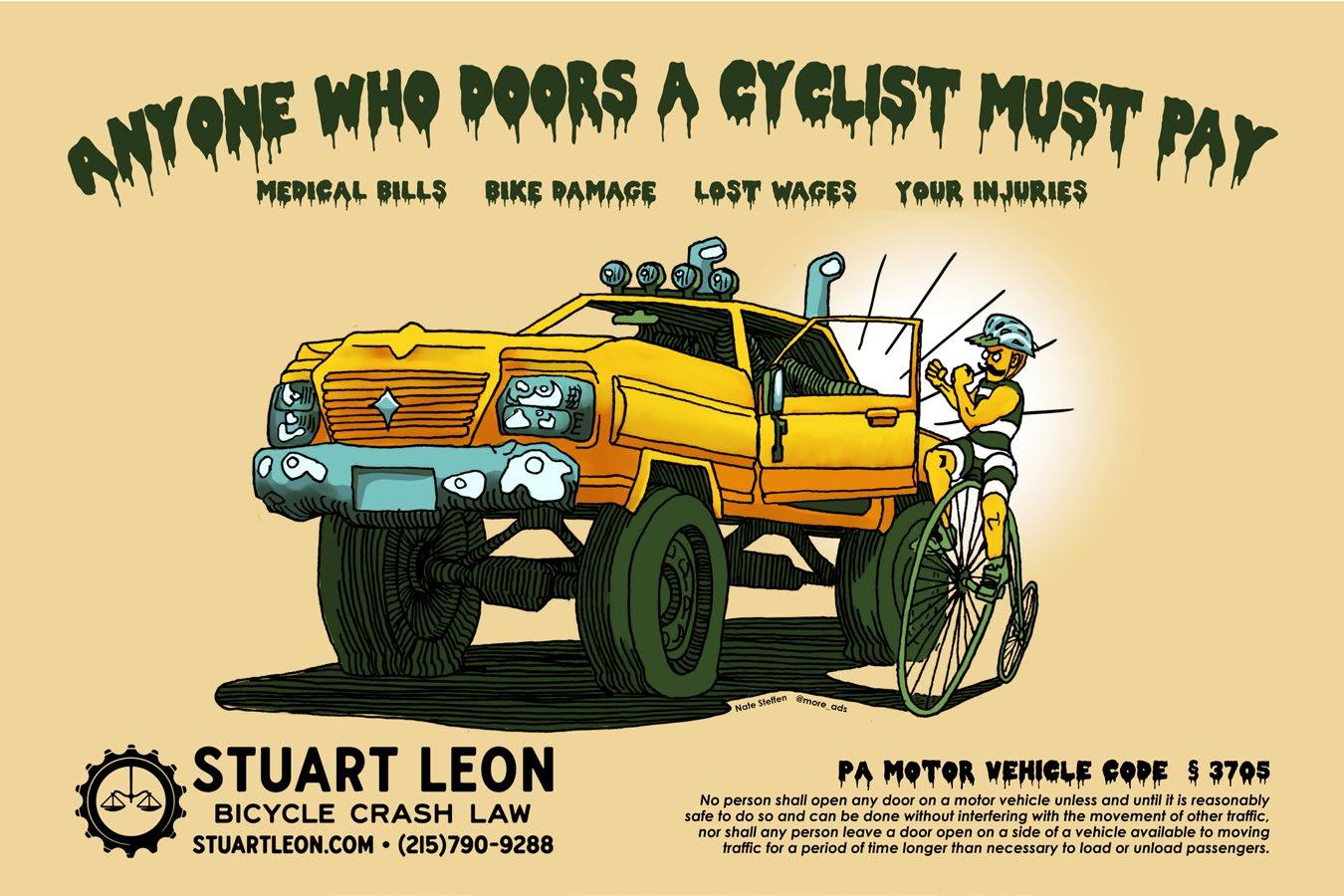
Trophy Bikes PHL
In Center City! Since 2003, Selling + Servicing BROMPTON FOLDERS, and now the new Brompton ELECTRIC. *ALSO: The BEST selection of BICYCLE BELLS on the East Coast. @trophybikes
Mother Compost
Woman-owned composting company providing service to the Main Line & educational programs for those looking to compost at home. Interested? Find out more at mothercompost.com
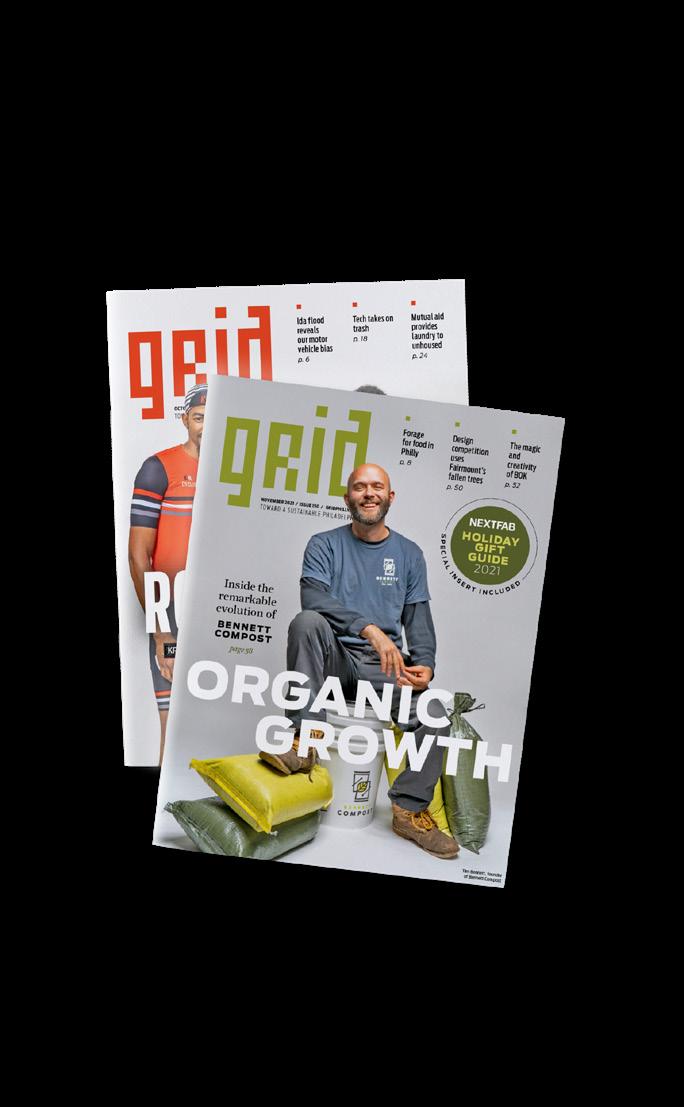
BOOK STORE
Books & Stuff
ENCOURAGING … Literacy, Knowledge, Creativity and Inquisitivity! at booksandstuff.info
local businesses ready to serve
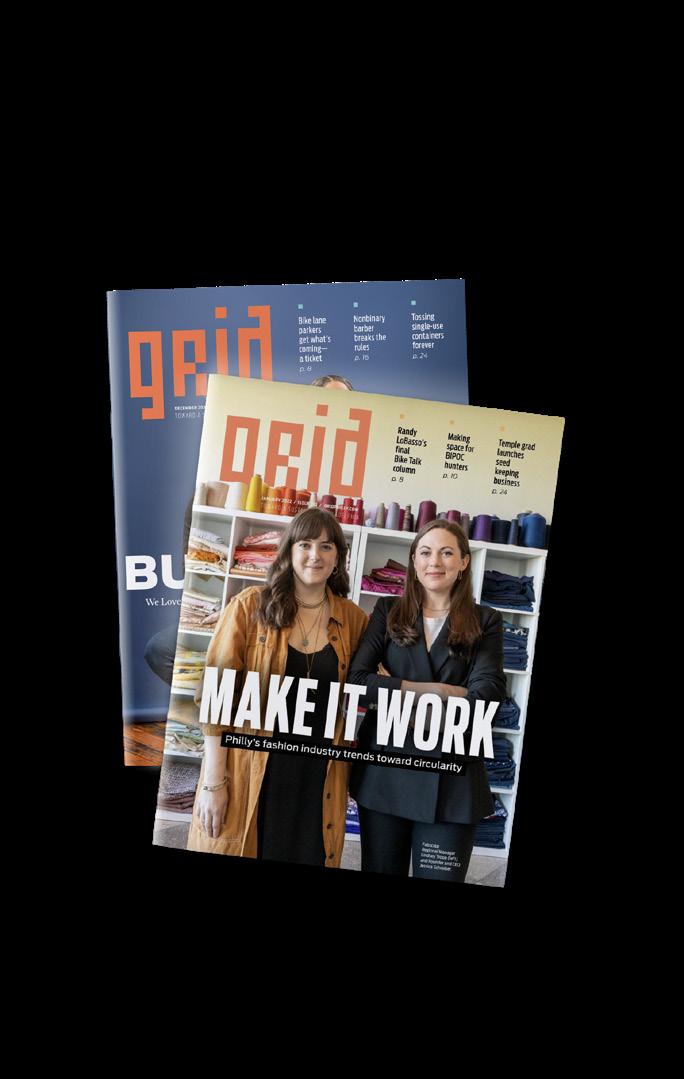
CAFE
The Random Tea Room
A woman owned co-working cafe that seeks sustainability in every cup. Our tea and herbal products are available prepared hot or iced, loose leaf & wholesale for cafes and markets. therandomtearoom.com
GROCERY
Kimberton
Whole Foods
A family-owned and operated natural grocery store with seven locations in Southeastern PA, selling local, organic and sustainablygrown food for over thirty years. kimbertonwholefoods.com
Evidence-based holistic medicine to help you rebalance and thrive! In-person and telehealth services, and a full service Chinese herbal medicine dispensary. Book online at acupunctureinmotion.com
COMPOSTING
Back to Earth
Compost Crew
Residential curbside compost pick-up, commercial pick-up, five collection sites & compost education workshops. Montgomery County & parts of Chester County. First month free trial. backtoearthcompost.com
Such big challenges can feel overwhelming. But, while no one can do everything, everyone can do something.
That’s why Natural Lands has spent the last 70 years working to save our region’s open space. Open space that absorbs floodwaters, cools temperatures, and provides habitat to wildlife.
You can stand with the land and side with the outside at natlands.org/support .
land for life. nature for all.
 Binky Lee Preserve Chester Springs, PA | 112 acres
Photo by Randy Richard
Binky Lee Preserve Chester Springs, PA | 112 acres
Photo by Randy Richard
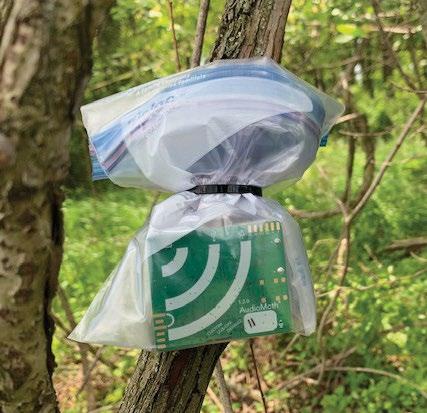
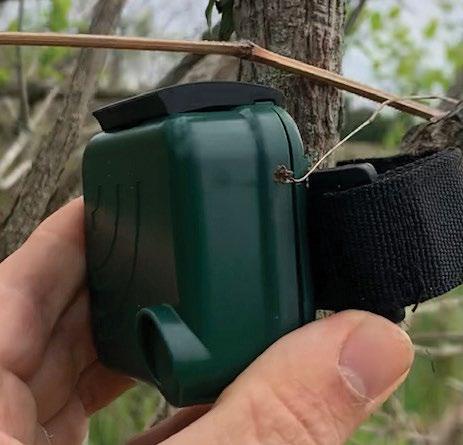
A lifelong outdoors enthusiast and birder, Johannes Nelson (Master of Environmental Studies ‘23—expected) was drawn to the Master of Environmental Studies program because of its connections to avian conservation. He discovered a unique opportunity to design his own degree concentration—Bioacoustics and Machine Learning for Conservation—that combines disciplines to help monitor difficult-to-detect bird species. “I came in thinking that I was going to get out in the field and have my boots in the mud every day,” he recalls. “And I did, but I’ve also been doing a lot of programming and coding.”

Bioacoustics is the analysis and study of living sound, explains Johannes; “It’s an underappreciated part of ecology—you can hear things that you would never be able to see otherwise.” By placing waterproof audio equipment in Pennsylvania wetlands, Johannes has recorded thousands of hours of bird vocalizations and created an algorithm that could quickly process the audio to identify distinct species. His research reveals population and behavior data about the secretive Virginia rail, a marsh bird whose wetlands habitat is often threatened by development. “It’s an exciting direction for me to take with these powerful tools that are underutilized in fields like conservation and climate science,” says Johannes.
To learn more about Johannes’ methods in machine learning and bird conservation, visit:
www.upenn.edu/grid